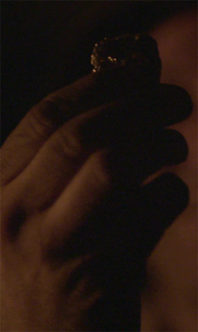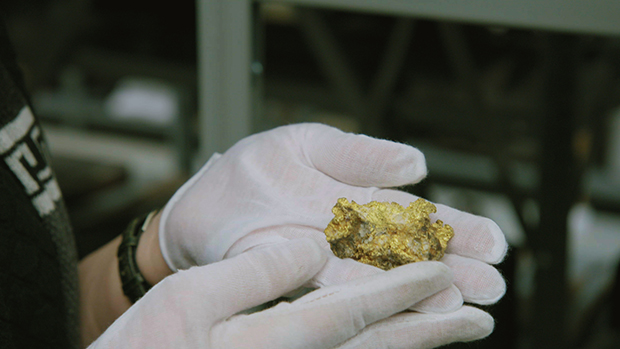
Northern Gold is, on its surface, your straightforward informative two part documentary series. It’s about Northern Ontario’s ongoing gold rush, a socioeconomic phenomenon that should evoke an old time glamour. First time director Catie Lamer interviews descendants of the men who came to towns like Timmins. She also shows archive photos and footage of these men, which is typical in these docs. These men were either Italian or from other places in Europe outside of England and France. The average history class teaches us of their struggles. They feel faraway now since these Europeans have assimilated themselves into Canada. But in using the typical elements you see in other documentaries, Lamer reminds us that this is recent history. That the struggles of those miners took place at a time before Canada became a peaceful mosaic.
With Northern Gold, Lamer makes sure that her audience realizes that this history is ongoing. People still migrate and work the mines in Norther Ontario as they did a hundred years ago. During the first episode, she talks to a Nigerian man who moved to Canada. He now works as a coordinator for newcomers like him, giving them advice. They have lots of questions, like how they’ll know that this new home is home to them. And in both episodes she interviews Charlie Angus, a Member of Parliament who represents his constituents in Timmins-James Bay. He acknowledges the necessary militant nature of mining unions. Doing his part, he speaks out for the miners today who are still vulnerable to injuries or worse. The transition between showing history and its contemporary echoes aren’t the smoothest but the message still resonates.

Northern Gold also rewires its audience’s understanding of colonialism. Although yes, it takes time for some of us to come on bard with that kind of unlearning. It still speaks to the racial connotations of a relationship between one people to another. Lamer’s previous work about Indigenous representation graced festival screens. Here, she similarly reminds us of how the First Peoples play into the dynamics of the mining towns. But most of the time, the colonial relationship takes place between two groups of people we now consider white. How the Anglo-French in Toronto exploited the Europeans and other people working in the north. How that mosaic of people fought back. And how their struggles contribute to the labor laws that we still need to fight for today.

